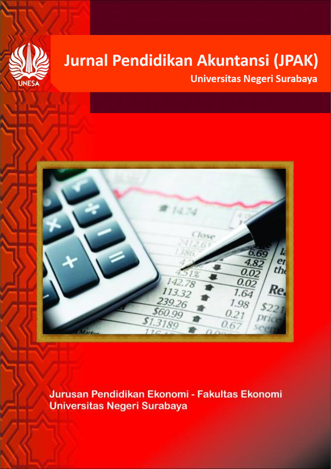Pengembangan Bahan Ajar E-book Pada Materi Siklus Akuntansi Perusahaan Jasa Sebagai Pendukung Pembelajaran Saintifik Kelas X Akuntansi Di SMK Negeri 2 Tuban
DOI:
https://doi.org/10.26740/jpak.v8n3.p55-59Keywords:
E-book; accounting cycle; service company accounting; scientific approachAbstract
In the 2013 revised curriculum, teaching and learning activities require student to be more active in the learning process. In addition, teacher is required to have teaching materials that linked to technological advances that refer to basic competencies and scientific approach, adjusted for the student needs. This research aims to create a product in the form of an e-book for teaching materials and analyze the feasibility of e-book teaching materials about service company accounting cycle. This research used 4D model (define, design, develop and disseminate) that developed by Thiagarajan, Semmel, and Semmel, but this research is only carried out until the develop stage. The research instrument used by researchers in this article is an open poll which consists study sheet of media expert, graphic expert and linguist as well as enclosed that also consists validation sheet of media expert, graphic expert and linguist. The analysis technique used by the researcher consists of analysis of study sheets, which will be analyzed descriptively along with validation sheet analysis that will be analyzed using Likert scale as stipulation in the research provisions. The assessment results obtained from material expert by 89.51%, it has a splendid eligibility level. 92.66% from linguist and 96.01% from graphic expert are showing also a superior eligibility level. Thus, from the three components, it was obtained average of 92.72% with the splendid eligibility level. This research concludes that e-book, that has developed with a scientific approach, that contain service company accounting cycle material, is stated very worthy to be used in teaching learning activities.
Downloads
Downloads
Published
How to Cite
Issue
Section
License
Authors who publish with this journal agree to the following terms:
- Authors retain copyright and grant the journal right of first publication with the work simultaneously licensed under a Creative Commons Attribution License that allows others to share the work with an acknowledgement of the work's authorship and initial publication in this journal.
- Authors are able to enter into separate, additional contractual arrangements for the non-exclusive distribution of the journal's published version of the work (e.g., post it to an institutional repository or publish it in a book), with an acknowledgement of its initial publication in this journal.
- Authors are permitted and encouraged to post their work online (e.g., in institutional repositories or on their website) prior to and during the submission process, as it can lead to productive exchanges, as well as earlier and greater citation of published work (See The Effect of Open Access).

Jurnal Pendidikan Akuntansi (JPAK) is licensed under a Creative Commons Attribution-NonCommercial 4.0 International License.
 Abstract views: 732
,
Abstract views: 732
, PDF Downloads: 593
PDF Downloads: 593



